
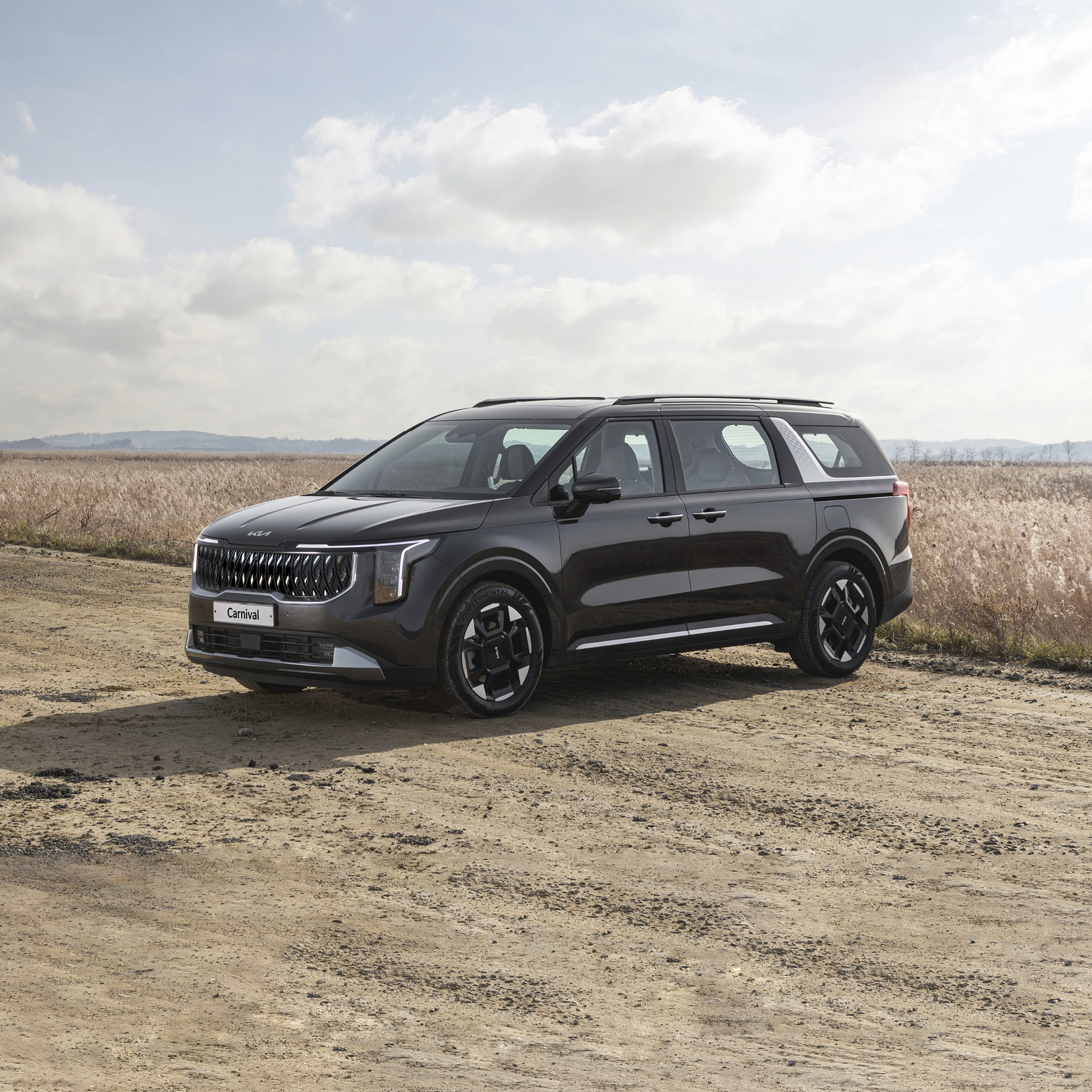


In an era where trends and novelties rapidly come and go, some vehicles maintain unwavering popularity, rooted in their distinct identity and strengths. The Carnival has firmly positioned itself as Korea’s iconic minivan, surpassing the Kia brand. While minivans inherently boast spacious and practical interiors suitable for multiple passengers, the Carnival has consistently evolved with each generational change, securing its status as one of the top family vehicles.
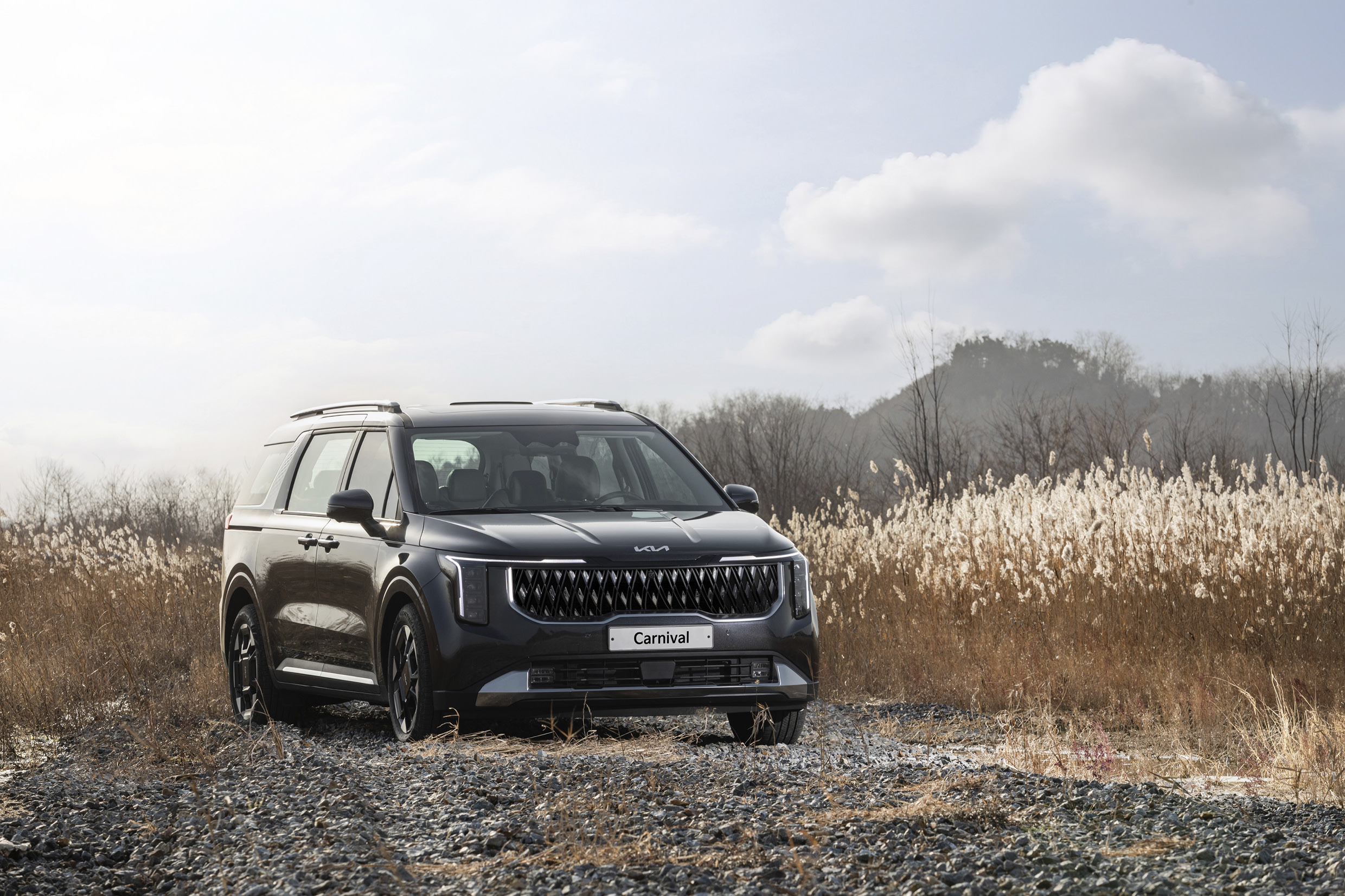
The fourth‒generation Carnival, introduced in 2020, underwent a complete transformation. It shifted to a new platform foundation, incorporated the latest Smartstream powertrain, and was equipped with an array of cutting‒edge convenience and safety features. Particularly notable was the SUV‒style design approach that aimed to break the minivan genre’s traditional focus on space and practicality, thereby attracting even those customers who desired family SUVs.

The New Carnival has now further evolved, embodying Kia’s new design philosophy, ‘Opposites United (Bold for Nature).’ The front fascia, inspired by constellations, features the ‘Star Map Signature Lighting’ daytime running lights intricately patterned onto a sophisticatedly crafted radiator grille, accentuating a futuristic and majestic feel.
The rear view, with horizontally extended graphics and vertical ‘Star Map Rear Combination Lamps,’ has been refined for a cleaner look. The integration of turn signals into the rear lamps is a welcome design change. Overall, the SUV vibe is more pronounced, thanks to design changes echoing the Kia Sorento, making it appealing even to those who found the previous model’s rear a bit plain.

The side view draws attention with its robust and bold wheel design. Meticulous attention to the front and rear overhangs and extending the character line above the door handles emphasizes the SUV style, while the next‒generation 19‒inch machined wheels, utilizing polygonal geometric elements, add a sense of solidity and luxury. The hybrid model offers a unique 18‒inch wheel design emphasizing aerodynamic performance, but our test vehicle, topped with the Signature trim, boasted 235/55R 19 Continental CrossContact tires and stylish 19‒inch wheels.
Another notable design change in The New Carnival is the introduction of the ‘Gravity’ trim, which employs a black color scheme on the dedicated radiator grille, wheels, and exterior details. It’s a positive move, catering to consumers who seek a differentiated character in their family cars.
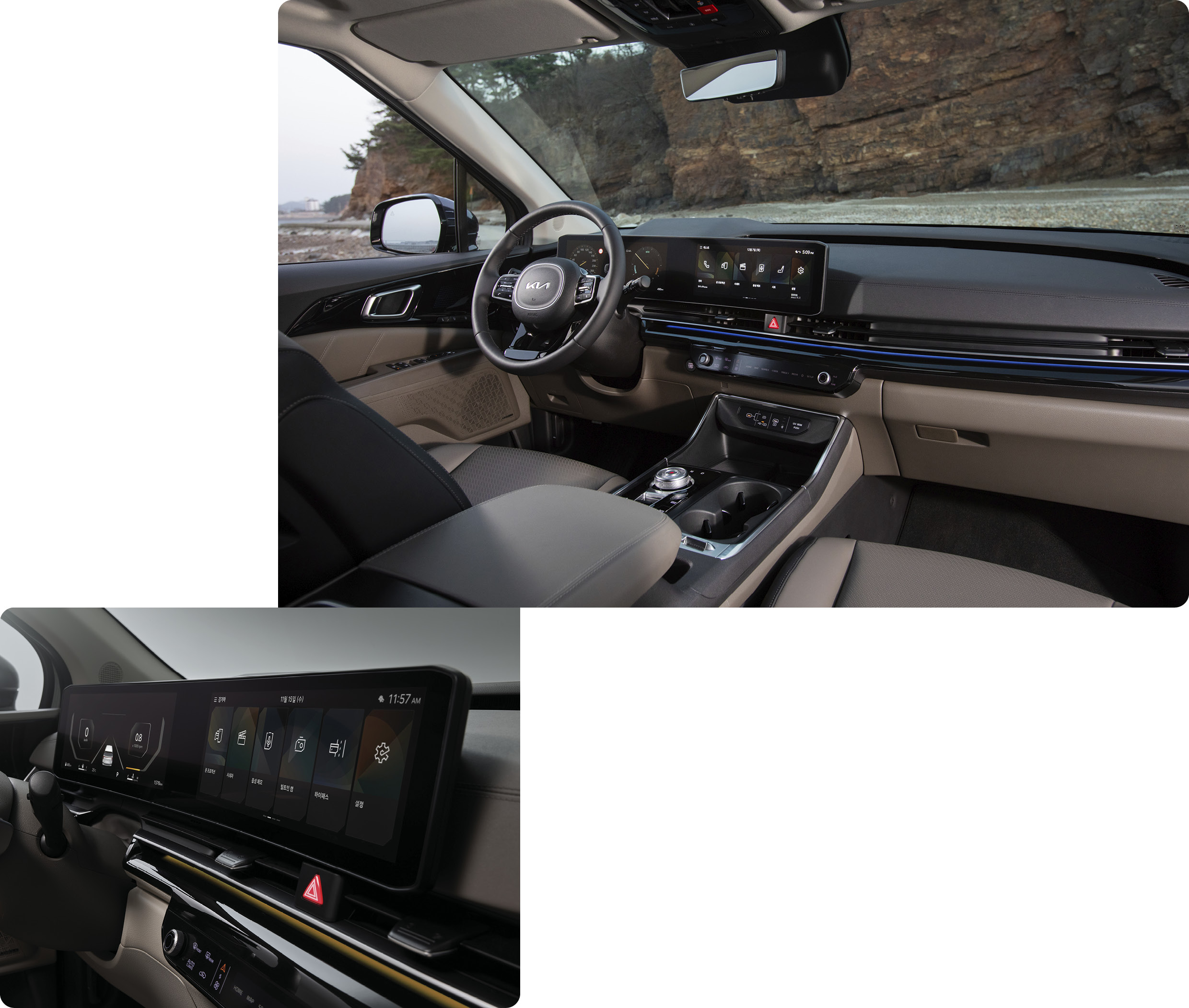
The interior design of the Kia The New Carnival Hybrid has been refined for simplicity and enhanced user convenience. The Panoramic Curved Display, widely adopted in Kia’s latest models, wraps behind the steering wheel, complementing the center fascia with a touch‒operated infotainment/climate control system for a sleek and high‒tech image. Attention to detail includes ambient lighting along the length of the dashboard’s air vents, amplifying the sense of space. The feeling of expansiveness is evident, thanks to a width of 1,995mm and a shoulder room of 1,630mm.
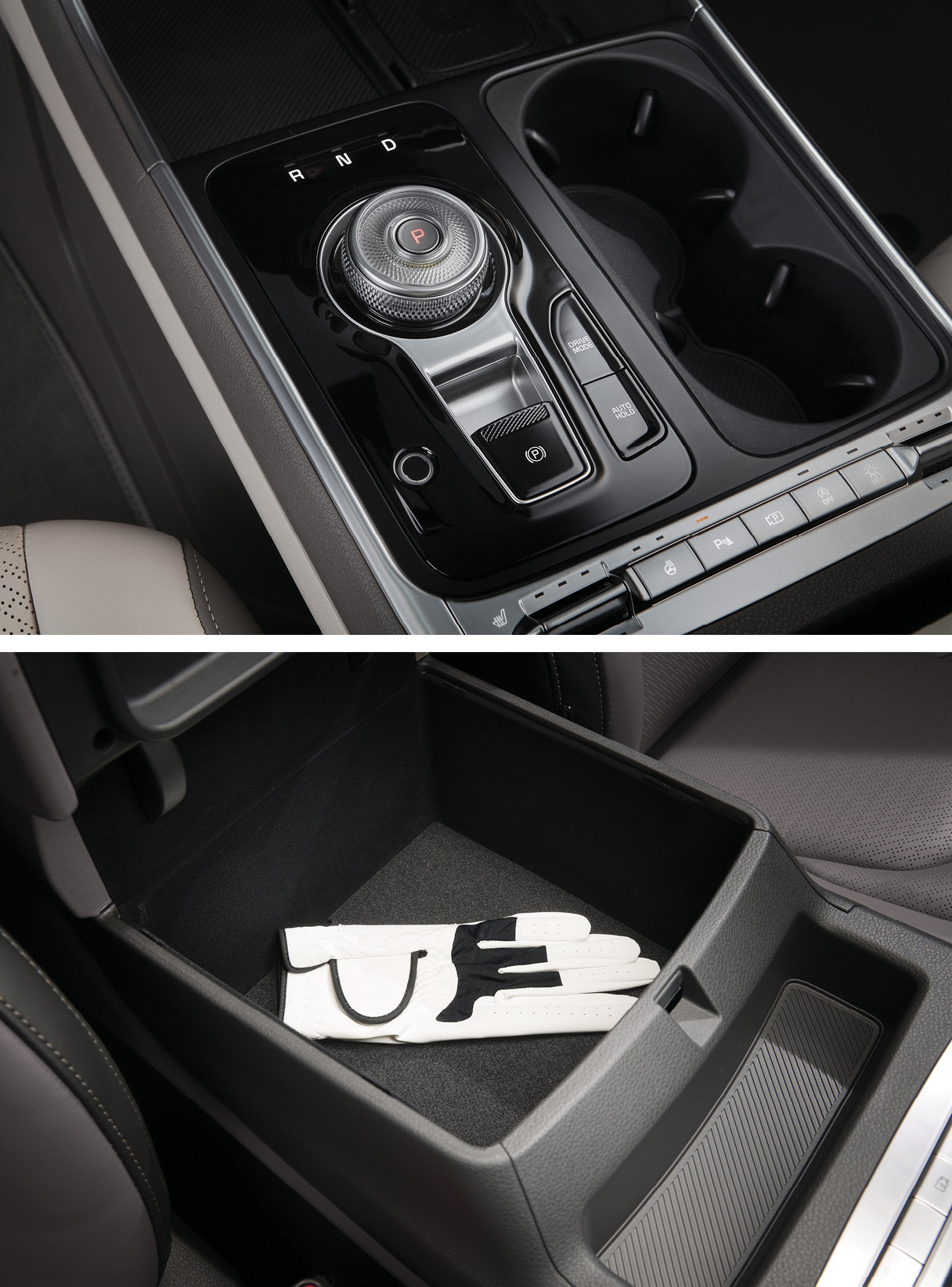
Another noticeable improvement is the practical usability of the storage space. The center console tray, previously covered, is now openly accessible, and the cup holders have been enlarged. Additionally, the console box features Kia’s first UV‒C sterilization function, allowing for convenient sanitation of personal items like wallets, sunglasses, and wireless earphones. Just place the items inside, close the cover, and press the button below the cup holder to activate a 10‒minute sterilization mode. This feature is ideal for the Carnival, widely recognized as a multi‒passenger family car.

The test vehicle was a 9‒seater with a 2/2/2/3 seat layout. The fourth‒row pop‒up sinking seats perfectly fit into the trunk floor and are generally kept folded, while the second and third‒row seats are frequently used, sliding on rails. Even a 180cm tall adult can sit comfortably in the third row, thanks to adjustable cushion height and backrest angle.
Adding the Comfort option brings C‒type charging ports to the third row and power reclining to the second‒row seats, allowing the backrest to be electronically adjusted and flattened. If the backrest of the third‒row seats is fully extended, it creates a useful space for leisure activities like car camping.

The multi‒zone voice recognition newly introduced in The New Carnival enhances the rear‒seat experience. Equipped with four directional microphones for the driver, front passenger, and left and right second‒row seats, it accurately recognizes the position of the speaker. Simply activate the feature by saying “Hey Kia” and easily control windows, seats, and climate without having to specify the seat location.

Indeed, The New Carnival Hybrid’s most significant change lies in the refined driving stability, ride comfort, and the first‒ever hybrid powertrain in the Carnival series. The New Carnival aims for a comfortable ride and stable handling, enhancing shock absorbers—a key component of the suspension—and reducing minor noise and vibration to ensure a pleasant experience in all seats.
From the 4th generation Carnival Diesel model I experienced a few years ago to the current 4th generation Carnival Gasoline model my parents use, my personal impression has always been of a big, bulky vehicle with a soft suspension that offers a cushy ride. This sensation might please those who prefer leisurely drives, but for someone like me, who favors smaller, more agile cars, it always felt a bit lacking. I often wondered if my family, seated in the back, were silently battling motion sickness as we crossed bumps at high speeds.
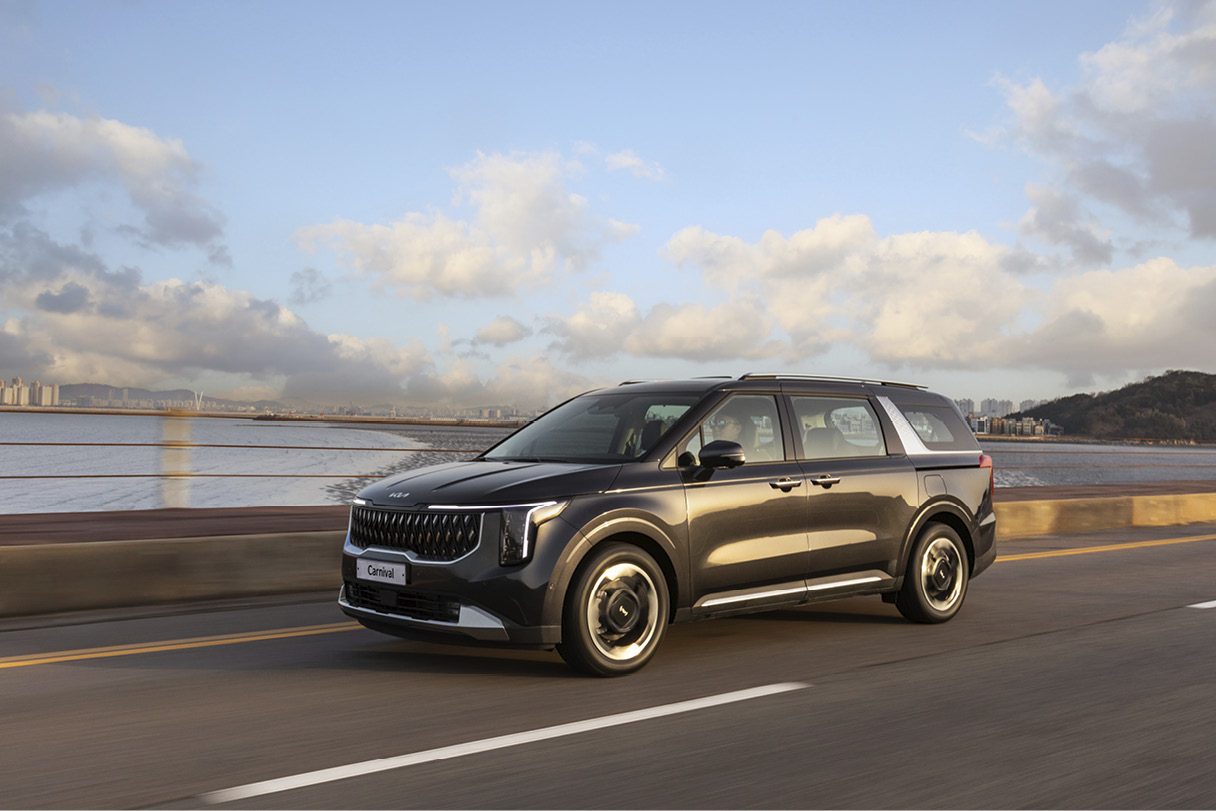
The New Carnival Hybrid, however, marks a significant upgrade in both driving performance and ride comfort. It’s not just an improvement; it’s a quantum leap, satisfying the driver with a ride quality that feels transformed. The new suspension setup is both firm and smooth, effectively adapting to various road conditions without any trace of the previous model’s excessive softness. It’s almost like driving a car smaller than its actual size.
Large and tall vehicles like the Carnival, if tuned only for softness, can experience rapid shifts in the center of gravity even on regular roads. For instance, crossing uneven surfaces or speed bumps can cause the front and rear of the vehicle to pitch, and in curved roads, centrifugal force can lead to the body rolling more on turns. While moderate movement can be comfortable for passengers, excessive motion can be unpleasant and even alarming.

The New Carnival Hybrid eliminates all unnecessary movements. As mentioned, this is a result of upgrading the shock absorbers. Specifically, it’s due to improved valves that control the oil inside the shock absorbers and adjust the damping force. To achieve this, the Carnival Hi‒Limousine’s high‒grade shock absorbers, previously only used in luxury models, were made standard and optimized in The New Carnival.
Moreover, the bump stopper and HRS (Hydraulic Rebound Stopper) within the shock absorber setup were also refined. Both play a crucial role in absorbing road impacts and noises, controlling unwanted pitching and rolling, thus improving both ride comfort and driving stability. Ultimately, these small but crucial components have combined to create The New Carnival Hybrid’s refined ride quality and solid driving feel.

The New Carnival’s revised chassis, including shock absorbers, has improved off‒road comfort. With the recent trend of using cars for outdoor leisure activities and the rising interest in the Carnival due to its practicality and spaciousness, this update will surely appeal to those who enjoy camping and caravanning. Indeed, during off‒road driving, The New Carnival Hybrid exhibited improved off‒road comfort due to reduced chassis jostling.

Mid‒drive, I handed over the wheel to someone else and took turns sitting in the second and third rows, experiencing the rear‒seat comfort as well. The unnecessary vertical movements were significantly reduced. The quietness inside the cabin has also greatly improved. The use of double‒laminated glass up to the second‒row windows, extensive reinforcement to reduce noise and vibrations in areas including the C and D pillars, and the connection points of the rear suspension and the inner walls of the trunk area contributed to this.
Sitting comfortably in the spacious rear seats, my mind wandered back to a recent consideration – the need for a new family car due to our growing family. The New Carnival Hybrid emerged as a satisfying choice, not only for the driver but also for the family members in the back, with its performance, excellent fuel efficiency, and hybrid capabilities.

The New Carnival Hybrid’s powertrain, similar to those in Hyundai and Kia’s midsize SUVs, comprises a 1.6‒liter gasoline turbo engine and a driving motor linked to a 6‒speed automatic transmission. However, the driving sensation it delivers to the driver is somewhat different. The output (54kW) and torque (304Nm) of the driving motor have been increased, smoothing the shifting sensation and ensuring a seamless and smooth progression during startup and acceleration. As it’s a vehicle often occupied by multiple passengers, the focus was on achieving a comfortable ride rather than dynamic performance.
A key contributor to The New Carnival Hybrid’s enhanced ride comfort is the E‒VMC (Electrification‒Vehicle Motion Control) technology, which controls the torque of the driving motor to assist driving performance. This technology, first introduced in the Kia Sportage Hybrid and now widely applied across Hyundai Motor Group’s hybrid lineup, includes E‒Handling for aiding the vehicle’s turning motion and E‒Ride for improving ride comfort over speed bumps.

The New Carnival Hybrid, with its focus shifted towards improving ride comfort rather than dynamic performance, has optimized its E‒Ride function. E‒Ride uses the principle of nose dive (the front of the car dipping) and nose up (the front lifting) during deceleration and acceleration to enhance ride comfort. Before hitting a speed bump, the driving motor’s deceleration torque reduces the nose‒up effect, and after passing the bump, acceleration torque minimizes the nose‒diving motion.
Once I realized that E‒Ride only activates off the brake pedal, it was quite easy to lift my foot off the accelerator to smoothly cross speed bumps. Current Carnival owners will immediately notice how the E‒Ride feature in The New Carnival Hybrid reduces body shake when crossing speed bumps.

During a traffic jam on my test drive, I experienced Kia’s first‒ever traffic jam‒specific control function. It optimizes the shift pattern and engine start timing based on navigation information and the vehicle’s driving state, identifying low‒speed congested areas. This function reduced unnecessary gear shifts in stop‒and‒go traffic, maintaining a comfortable ride and aiding fuel efficiency, enhancing the overall driving experience.

Reflecting on my journey home after the test drive, I realized that until now, the Carnival had been merely a sufficiently large means of transport for carrying multiple passengers. Perhaps there was also a subconscious resistance to my parents’ unrelenting preference for the Carnival, dating back to the first generation released in 2000. Even during college days, when I used the Carnival for trips with friends or dates, it was just a mode of transport.
My prejudice against the Carnival completely changed after experiencing The New Carnival Hybrid. The pleasure of driving improved, and the experience from the rear seats was also comfortable. Moreover, the harmony between the efficient engine and motor, along with the energy recovery system through regenerative braking, added to the joy of seeing the fuel efficiency steadily increase. Covering approximately 550km during the test, the accumulated trip computer fuel efficiency was an impressive 14.0km/l. I wondered, could there be a better choice than The New Carnival Hybrid for traveling with a family, especially with a toddler? This should be reason enough to convince my wife.
Photography by Kim Beom‒seok